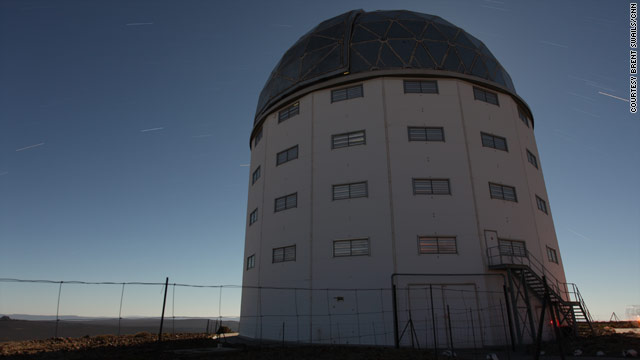Distant galaxies, nebulae, and star clusters are all in the reach of a telescope large enough to see all the way to the edge of the observable universe, back in time to the aftermath of the big bang.
Astronomer Alexei Kniazev is one of the handful of scientists who run experiments for fellow researchers from 15 institutional partners around the world.
"It's the largest mirror in the southern hemisphere, which is 11 meters in diameter, which consists of 91 one-meter hexagonal segments," he told CNN.
 Gallery: Southern African Large Telescope
Gallery: Southern African Large Telescope "We are using this telescope to study objects, not in our galaxy, but nearby galaxies, which is practically impossible to do with smaller telescopes," said Kniazev.
"From southern hemisphere, it's possible to study the center of our galaxy, the Milky Way. This is not possible to see from the northern hemisphere. And only from southern hemisphere is it possible to study Magellanic clouds, which are [the] nearest galaxies."
But instead of gazing at the heavens, at the moment Kniazev is forced to study images taken months ago.
Since its launch in 2005, Salt has been hampered by technical problems. Its main instrument, a multi-million dollar spectrograph, sits in a work room, waiting to be re-attached in mid January.
Lead engineer Martin Wilkinson says it's the specialized nature of the instrument that has hamstrung engineers, who must learn as they go in making repairs.
It's using a lot of different technologies that have never been put together in this way before."
--Martin Wilkinson , lead engineer, Salt
--Martin Wilkinson , lead engineer, Salt
"From that they [researchers] are able to determine, for example, how fast galaxies are moving away or towards us, the constituents of the galaxies, what they are made of, and it gives the astronomers a huge range of information.
"It's using a lot of different technologies that have never been put together in this way before."
While the team says they've been patient throughout the repair process, Kniazev is looking forward to resuming his research.
"In January we put both instruments on the telescope and the telescope becomes 100 percent functional," he said.
For now, Salt remains more a symbol of the promise of astronomy in Africa than a tool for research. But Kniazev and others say that promise is great.
"Helium was discovered by astronomers in the spectrum of the sun, nuclear reactions were discovered by astronomers studying stars, so it means we never know what we will discover in the future and how useful this knowledge will be," he said.
Hiç yorum yok:
Yorum Gönder